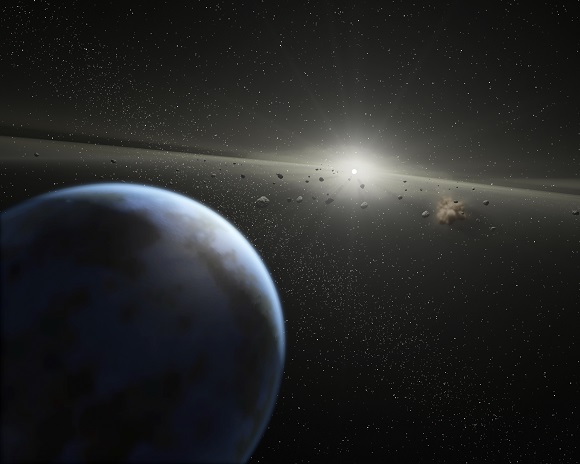Among my skills as blog editor, podcast host and Education Officer Extraordinaire here at Armagh Observatory and Planetarium, I’m also a fully qualified catastrophizer! That’s right; you give me a senario and I’ll assume the worst possible version of the thing has a very high chance of happening. This came to light for me recently whilst browsing TikTok (as you do) and a certain video brought back a memory of secondary school geography class and the day we learned about how in Yellowstone National Park in The United States there is a SUPER volcano that is 1000 years overdue for an eruption that would kill all life on Earth.
Living on Earth definitely has its benefits, we have a lot of geographical features compared to the other planets in our solar system. However, the threat of a supervolcano killing us all is more on the negative side.
Well… I’ve decided it is my duty to communicate to the masses what I have learned on my deep dive of “will this volcano actually kill us all??!” – in all honesty, a fitting end to 2020 don’t you think?

Where is Yellowstone?
Yellowstone National Park (established 1872) is a 3,468 square mile national park across three states (Wyoming, Montana and Idaho) in The United States of America. This places it in the western portion of North America. Not only was it the United States’ first national park, but it is also thought to be the first national park worldwide!

It spans nearly three and a half thousand square miles; in our terms think County Armagh and County Down combined. It has many features including wildlife, rivers, lake and most importantly The Yellowstone Caldera – the volcano in question.
The Yellowstone Caldera

This supervolcano is roughly 55 x 72km – Belfast could fit into it 32 times. That’s right – 32 times. That’s what they mean by supervolcano.
Now, the Yellowstone Caldera is classified as an active volcano – it is still very much alive. There are between 1,000 and 3,000 earthquakes per year caused by the volcano to demonstrate that. There are also many geysers in the surrounding area, such as Old Faithful, which remind us just how active the volcano is.

Yellowstone volcano is perched on a great cove of magma. The volcano itself puts enough pressure on this magma to keep it contained, however if this pressure were to break or give in any way a chain reaction of events could lead to a violent gaseous eruption.

This volcano has not been violently active in the spewing lava sense in quite a while. The last three supereruptions occurred 2.1 million, 1.3 million, and approximately 630,000 years ago, and some claim that we are “overdue” for an eruption – but how true is that?
Is it going to kill us? Probably not.
Sorry to burst your bubble if you were looking forward to a volcano fire display, but according to the Yellowstone website:
There is no evidence that a catastrophic eruption at Yellowstone National Park (Yellowstone National Park) is imminent. Current geologic activity at Yellowstone has remained relatively constant since earth scientists first started monitoring some 30 years ago. Though another caldera-forming eruption is theoretically possible, it is very unlikely to occur in the next thousand or even 10,000 years. Scientists have also found no indication of an imminent smaller eruption of lava.
Yellowstone National Park Q&A
Other scientists note that the suggestion of a volcano being “overdue” and eruption does not make sense at all – volcanoes do not erupt when we feel it should. And even if it did, the numbers would suggest we have another 100,000 years to wait. Scientists are also confident that they would be able to predict an eruption months, possibly years in advance. We could do nothing to stop it, but perhaps we could evacuate the planet (if we are talking 100,000 years).
You can sleep soundly. No danger here.
Okay, but what if it did?

A volcano of this size erupting would indeed be an end of days event for many. The states surrounding the volcano would be covered by lava and would suffer land collapses, forming further calderas. The entire United States would likely be covered in ash, and ash would continue to fall possibly for decades worldwide. The climate would change dramatically as the clouds of ash block out the sun.
The ash would be the main problem, killing animals, crops, lowering the temperature and killing if not giving humans lifelong respiratory problems.
But good news! This won’t happen. The most likely type of eruption we are to ever see in the next 10,000 years would be a series of smaller, mini-eruptions which are far less damaging (much like the one in Iceland in 2014).
So, Yellowstone isn’t going to kill us all. Earth’s exciting geological features will continue to inspire and excite us without necessarily causing us any harm – how amazing is it that we live on such a unique and interesting planet?




0 Comments